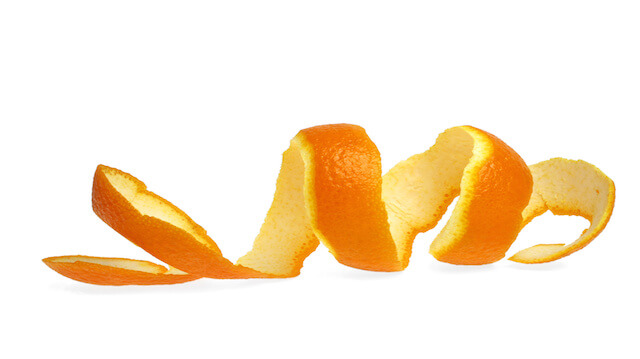
The standard practice for preparing a vegetable or fruit is to wash it, peel it, cut it and cook it. Most of us simply throw fruit and veggie peels away, but we might be throwing away the most nutritious part.
Research from the Royal Society of Medicine found that produce peels have some health benefits that the flesh of the fruit or vegetable may not have. Produce peel can provide the following health benefits:
- Antioxidants (used to heal the fruit while it is still growing)
- Anti-inflammatory compounds
- High nutrient content
- Antibacterial/antiviral compounds
- Digestive aids
- High fiber content
The following five produce peels are particularly high in nutrients. The next time you pick up one of these vegetables or fruits, eat the peel right along with the produce! As an added tip, look for organic produce to avoid concentrated pesticides in the peel. The pesticides added to conventional produce will counteract some of the health benefits of eating the peels.
Kiwi
Kiwi’s furry brown skin is a turnoff for many, but if you can stand the texture, the peel is full of beneficial ingredients. The skin is three times higher in antioxidants than the flesh and has antibacterial and antiviral properties.
How do I eat it? Golden kiwi has all of the health benefits with less fur.
Banana
Banana peel may not seem like something edible, but it is packed with beneficial compounds. Banana peels are high in serotonin, which can boost mood and help regulate mental disorders. Banana peel, just like most other fruit peels, have beneficial antioxidants that are particularly beneficial for eye health.
How do I eat it? Push the peel through a juicer and mix with other produce. Ensure your bananas are organic.
Potato
Potato skins are some of the healthiest produce skins you can eat. Potato skins have high levels of vitamin C, zinc, potassium, iron, fiber and phosphorous. The inside of the potato is starchy and can contribute to weight gain, but the skin of a potato is a healthy choice.
How do I eat it? Sprinkle potato skins with cheese and cook them in the oven until crispy. Anytime you make a potato dish, leave the skins on.
Squash and pumpkin
Squash are in season during the fall and winter. Squash contain high levels of vitamin A and zinc. Squash skins also contain high levels of antioxidants and higher levels of the vitamins found in squash flesh. Pumpkins may have skin that is too firm to eat, but the closer you get to the skin, the more nutrients you will receive.
How do I eat it? Don’t peel squash before cooking. This will not only boost your nutrient intake but will also make cooking easier. Try cutting your squash in half and baking it in a dish with water.
Orange and citrus
 It’s hard to imagine biting into the peel of your orange, but discarding this part of a citrus fruit may be a mistake. Citrus fruits contain super-flavonoid antioxidants in the peel only, which work to reduce cholesterol. There are 20 times more antioxidants in orange peel than in the flesh. The peel also contains high levels of pectin and fiber, and that fiber can feed beneficial bacteria in the intestines.
It’s hard to imagine biting into the peel of your orange, but discarding this part of a citrus fruit may be a mistake. Citrus fruits contain super-flavonoid antioxidants in the peel only, which work to reduce cholesterol. There are 20 times more antioxidants in orange peel than in the flesh. The peel also contains high levels of pectin and fiber, and that fiber can feed beneficial bacteria in the intestines.
How do I eat it? Let the peel dry and grind it up. Use the powder as a flavoring for recipes. Use fresh zest and grated citrus peel to flavor salads and other dishes. Juice whole oranges rather than using just the fruit.
By including these peels in your diet, you will boost your nutrient intake and reduce waste at the same time. When you are eating the peel, ensure that your fruits are organic and well washed.
-Brenda Priddy
Brenda is a writer, chef and health nut with many years of writing experience in the alternative health industry. She specializes in health news, healthy living, alternative treatments, and healthy recipes. She loves educating others about sustainable, healthy living. Brenda lives in Texas with her husband and two daughters.
Sources:
http://pubs.acs.org/doi/abs/10.1021/jf030137j
http://www.sciencedirect.com/science/article/pii/S0271531703001842
http://www.sciencedirect.com/science/article/pii/S0308814603006332
http://www.ncbi.nlm.nih.gov/pmc/articles/PMC4336979

